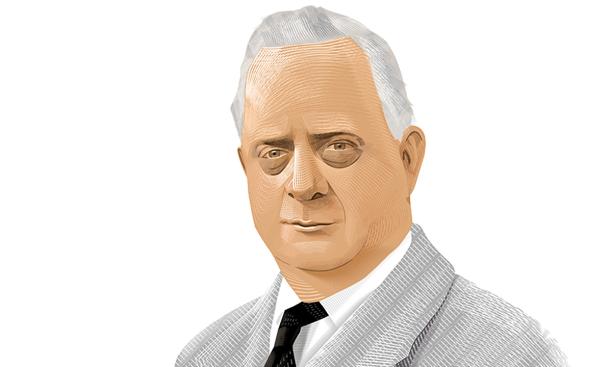
What can a cookbook tell us about the divide, in the world of haute cuisine, between those who cook and those who eat?
The word “amateur” was once a badge of class: It meant lover, and it described someone who studied, say, art history because he loved the subject, not because he needed to make money from it. A “connoisseur,” by contrast — a knower — needed the money, and he was paid to know, to help amateurs acquire what they loved, say by authenticating paintings, in exchange for a wage. An amateur was considered better, purer, than a connoisseur.
Which brings us to The Gun Club Cook Book, a collection of recipes and culinary advice that Charles Browne 1896 *1899 published in 1930. Browne was a pillar of Princeton’s elite. He served four terms as Princeton’s mayor and one as a congressman for New Jersey, and he helped to found the Princeton Inn, now Forbes College. He also helped to found the Nassau Gun Club, a club for the gentleman’s sport of clay pigeon shooting. The members dined in the Nassau Club, sometimes eating food prepared by professional chefs and sometimes using the kitchen to scratch up their own grub, and the book contains their collective wisdom on matters culinary.
“This book is written by amateurs for amateurs,” Browne writes, and what he means by amateur is someone who knows his oyster shells. European oysters are finer, more expensive, than American oysters, and so the discerning gourmand must recognize the shells of different oyster varieties.
“If the crust gets out of hand it can be thrown away and the remaining baked fruit is not so bad
in itself.”— The Gun Club Cook Book recipe for apple pie
More, one finds the best sirloin steaks at the Waldorf, the best club cheese at the Manhattan Club, and the best arroz à la valenciana at the Habana Yacht Club. One should know what drinks and dishes are expected at clam bakes, luncheons, picnics, tiffins, smokers, and teas. Lunch will be three courses, dinner rarely more than six. Breakfast is a hurried affair because the dawdler will be rushing to get ahead of the sound of the chauffeur beeping the car’s horn.
An omelet aux confitures may be eaten only with jam, unless one wishes to have it splashed with rum and set on fire. Caviar may be eaten only with toast and sweet butter. At breakfast, one may serve coffee with both sugar and cream, but at dinner, one may serve coffee only with sugar, not cream.
There are Princetonians for whom a Princeton education is, in part, an education in signs of belonging. Browne belonged to a different group, one that already has the signs of belonging, and his book is an ironic and assured rehearsal of those signs. He wrote it to amuse readers who could name-check Oscar at the Waldorf. A cookbook for those who are best at making reservations.
This correspondent believes it is very much possible to tell which dishes in the cookbook represent intelligence from the club members’ chefs, and which represent the best efforts of the club members themselves. Consider, for example, the book’s recipe for apple pie. The Gun Club advises that you don’t need a bottom crust for your pie, because those are hard to get right; instead, just make a top crust. (“If the crust gets out of hand it can be thrown away and the remaining baked fruit is not so bad in itself.”)
Fill a pie dish with layers of chopped tart apples, alternated with layers of sugar, butter, pie spices, and a little lemon rind. For the top crust, combine a pound of flour with half a pound of butter, chop to the consistency of cornmeal, then add water to soften. Cut in another half a pound of butter. Roll out the crust and lay it on top of the filling. During baking, the crust will definitely droop into the filling, so to prevent this, you should use a whiskey glass to prop up the middle of the crust. Bake for about half an hour, then remove the whiskey glass. When serving, pour a shot of rum into the hole where the whiskey glass was. Bon appétit.
